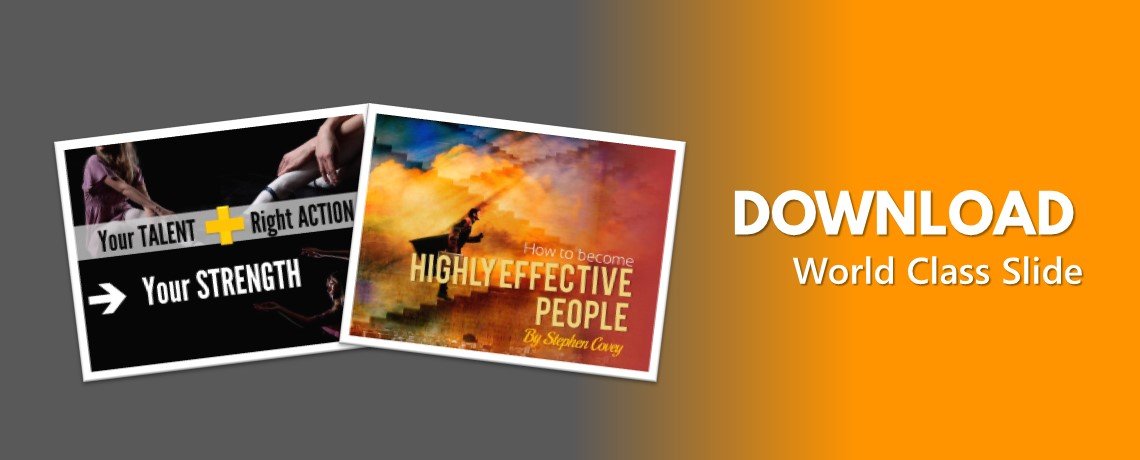Are you a student who often has to give presentations in front of your teacher or professor? Or an employee who often has to give presentations in front of your clients or your boss?
Well, whoever you are, I am sure you have experienced nervous or anxious when you have to give a presentation or speaking in front of the public.
A public opinion poll about fear reveals that fear of death stand at the second place of the list after the fear of public speaking that stand at the first place. A result that shows us about just how many people who afraid to speak in front of the public.
Actually, giving a presentation or speaking in front of a public is not as scary as many people imagine. As long as you prepare the presentation properly and willing to practice sufficiently, you will be a able to make a good, convincing and memorable presentation.
Here are some tips that you can use to make a convincing presentation. These tips are based on my experience in giving presentations and public speaking, as well as some presentations training I have attended.
1. Set the goal of your presentation
Every presentation must have a goal. You present a product to make your client buy it. You present business plan proposal to get support and approval from your boss. You explain a topic that you have mastered to make people understand it.
In general, the purpose of presentation is one of these two things: giving information (informative) or persuade the audience to do something (to persuasive).
Goal setting is important because it will determine the way you prepare and deliver the presentation. Presentation to inform will be different than presentation to convince.
An informative presentation need to be designed as informative as possible. The purpose is to help your audience who doesn’t know the topic at all before they attend your presentation become well informed after leaving your presentation.
A persuasive presentation should be able to touch the emotional side of the audience so they willing to change their attitudes as well as encourage them to do something such as: approve your idea, buy your product, or supporting what you’ve done or what you will do.
2. Know your audience
If you don’t know it you won’t love it, a saying that also applied in presentation. Take your time to find out who will come to your presentation. What is their position in the organization, what they expect from your presentation, what is their education background, what is their learning style, and so on.
This is important because basically a presentation is delivering some materials to an audience. Even if you think you have done the best, you can’t expect that the audience that hears you always have the same thought.
By identifying the audience you will be able to decide your presentation approach. Maybe one of your audiences is an important person in the organization who likes graphics and figures. Showing good graphics along with explanations for the numerical data will be a plus. Maybe your prospective audience is a visual learner. She will be pleased with images, diagrams and concrete examples. Then you can decide to add more images into your slides.
In another occasion you might have audience with kinesthetic learning style. Demonstrating something in front of people like this will give a stronger impact. If necessary, you can bring the product or anything you can use as a model during the presentation.
And if you find your audience consists of people with a mixture of learning style, just combine all approach proportionately.
3. Make a presentation framework
In general, a presentation consists of three parts; opening, content, and closing.
Opening part is a place where you can give an early description of the presentation topic and goal. Content is a part where you can explain your materials structure, starting with the background, problems, and solution you want to offer. And the closing part consist of your summary for the topic and a call for action to the audience, which could be buying your product, accepting your idea, or a better understanding about your topic.
As the first step in making the framework, you can create a mind map to describe the main ideas or keywords of anything you will explain in your presentation. Mind mapping will make you easier to see the whole description of your presentation and the main points that should be delivered so that the audience will completely understand and accept it.
In your mind map be sure to pay a lot more attention to the opening and closing part. These two parts is more important than the other, because it will be remembered most by the audience as well as the opportunity for you to get their attention. But it doesn’t mean that the other part is not important.
Some methods you can use in the opening part are asking question, giving a quote, statement, story, or humor. If you think it is necessary, you can memorize it. A good opening that flowing easily will build-up your self-confidence to go to next step of your presentation.
Closing part is a place where you summarize the substance of the whole presentation. This part is very important because it is your chance to give something that will always be remembered by the audience after they leave the room. Be sure to prepare it well.
4. Prepare presentation slides and other visual aids.
It is hardly to find a presentation without any PowerPoint slides or similar programs these days. To prepare a good slide there is only one principle, “Keep It Simple”. Why? Your audience wants to hear about a complicated things in a simple way. Not the other way around.
Please note that the slide presentation is a visual aid, not the presentation itself. “You are the presenter, not the slide.” It is you that will determine attractiveness of your presentation. As long as the visual aids are in line with the messages you give verbally, you can use it. But if this aid makes the audience more confused instead, don’t use it.
A principle you need to know in preparing slides is; display only the main and significant point. Never make a slide that display detailed information and put in everything you would say. This will make your audience get bored easily. They will prefer to read the slides and no need to hear your explanation anymore. Your presentation will miss the goal.
Here are some tips to make an effective slide:
- Don’t use too much text on a slide
- Use images, diagrams and tables to explain a concept, data and facts
- Don’t make a complex design because it will be harder to understand in a short time and tends to make the audience weary and not focus on what you are saying.
I will explain about how to make an effective slide specifically in this posting.
Remember that slide is not the only aids in a presentation, there are many other tools that you can use such as: flipchart, product samples, videos, and even your own body language. If you decide to use it, just prepare it carefully.
5. Practice
Practice make perfect. This also apply in preparing an important presentation. The more you practice the more skilled you are. It will be a good idea to invite your friends to listen to your presentation. Ask them to give comment to your materials, your presentation style and get their feedback on which part still need improvement.
Practice will also help you to know about how well you’ve prepared and mastered the materials. Think about your audience stand point while practicing: do they know the materials, what is their concern to this presentation, what questions they might ask, and what they expect from the presentation. By answering these questions you will be well prepared.
6. Relax
Relax and enjoy your presentation. Most people get anxious once they start talking in front of people. It could happen to you, too. But you don’t have to be panic. Some level of nervous is normal. In fact, even a great public speaker also experiences this feeling. Use the nervous energy to help you focus on yourself and what you have to say in the presentation.
You have to relax to calm down yourself. In this condition, it will be easier to recall anything you’ve memorized and practice. And it will help you to deliver a good and convincing presentation.
A simple tips to reduce nervousness and get relax is close your eyes, take a deep breath, and releases it slowly. Do this several times, and you will feel fresher and more relax.
That’s the tips to prepare a convincing presentation. In next posting, I will explain about how to deliver the presentation, started from the opening (using humor, quotes, or questions as the opening part of presentation), content, and closing.
Do you have other tips in making a good presentation?
Don’t be shy. Please share your thought in the comment area.



